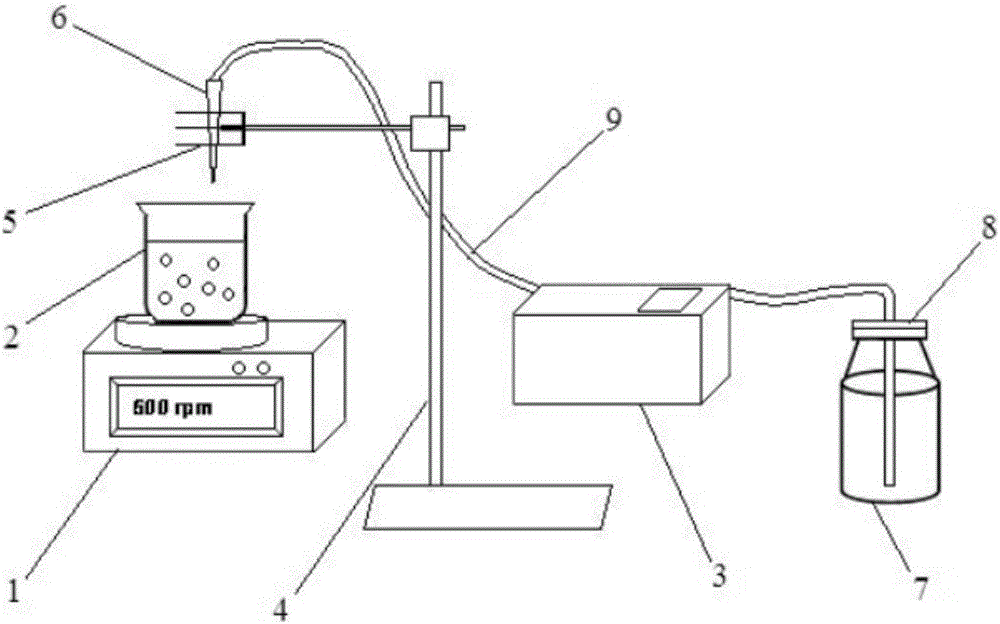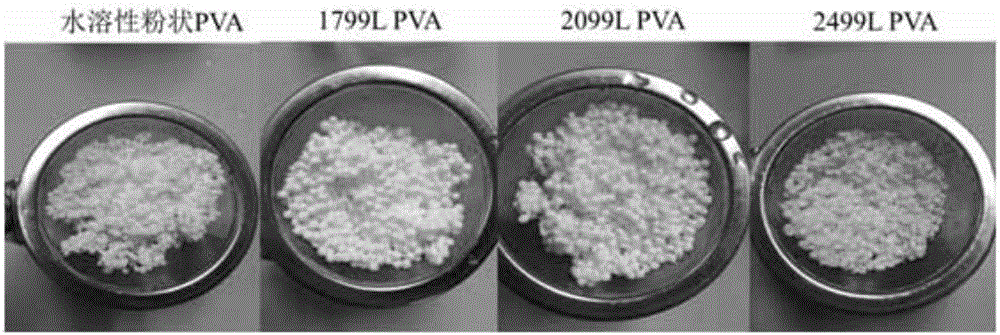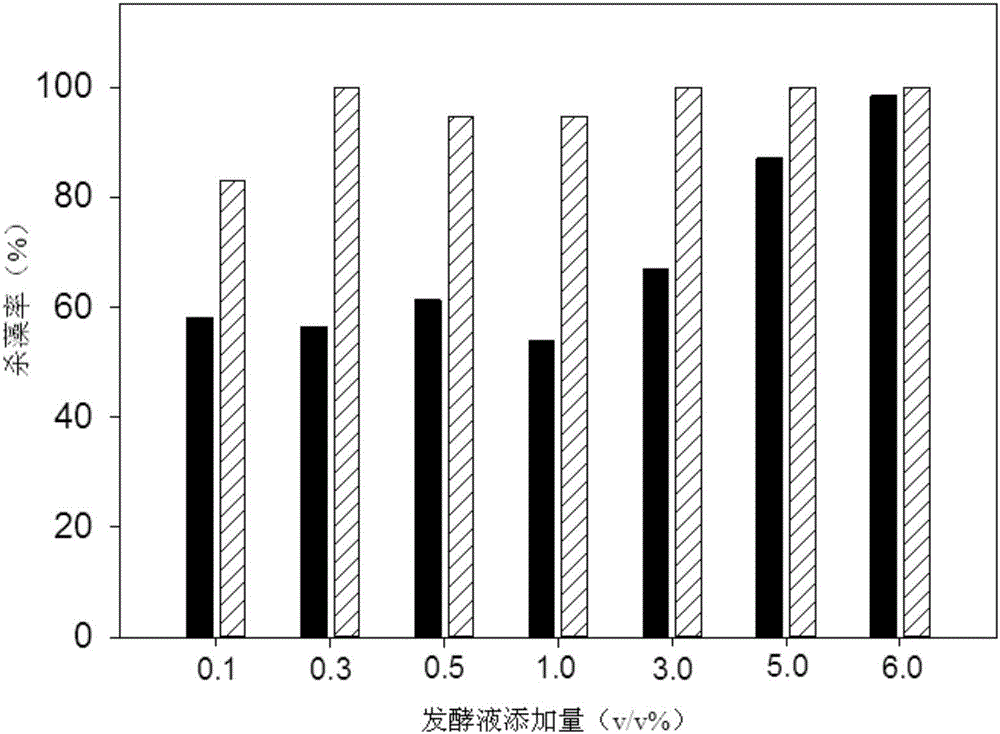Laboratory bacterium immobilization method
A laboratory-use, bacterial technology, applied in biochemical equipment and methods, methods based on microorganisms, immobilized on/in organic carriers, etc., can solve the problem of low bacterial embedding and difficult long-term operation of continuous reaction systems , poor stability of bacteria immobilized particles, etc., to achieve high survival rate, reduce occupied space, and easy to operate
- Summary
- Abstract
- Description
- Claims
- Application Information
AI Technical Summary
Problems solved by technology
Method used
Image
Examples
specific Embodiment approach 1
[0032] Specific implementation mode one: combine figure 1 Illustrate this embodiment, the method for immobilizing bacteria in the laboratory of this embodiment comprises the following steps:
[0033] 1. Carry out bacterial culture, make the bacteria in the logarithmic growth phase, and obtain the bacterial liquid;
[0034] 2. Centrifuge the bacterial liquid at 4°C, 9000-12500rpm to obtain the bacterial cells for immobilization;
[0035] 3. Disperse the thallus obtained in step 2 with physiological saline, then add polyvinyl alcohol solution and mix evenly to obtain a PVA-thallium mixed solution; the amount of thalline in the PVA-thallium mixed solution is 15~20g / L , wherein the amount of thalline is dry weight, and the concentration of polyvinyl alcohol in the PVA-thalline mixed solution is 8~12g / 100mL;
[0036] Four, use bacterium immobilization reaction device to react, add PVA-thalline mixed solution in the glass bottle 7 of bacterium immobilization reaction device, add b...
specific Embodiment approach 2
[0040] Specific embodiment two: the difference between this embodiment and specific embodiment one is that the bacteria described in step one are Clostridium acetobutylicum, Vibrio brasiliensis, Lactobacillus casei, Escherichia coli or Saccharomycescerevisiae . Others are the same as in the first embodiment.
specific Embodiment approach 3
[0041] Embodiment 3: This embodiment differs from Embodiment 1 or Embodiment 2 in that: in step 2, the bacteria liquid is centrifuged at 4° C. and 10,000 to 11,000 rpm. Others are the same as in the first or second embodiment.
PUM
| Property | Measurement | Unit |
|---|---|---|
| concentration | aaaaa | aaaaa |
| concentration | aaaaa | aaaaa |
| degree of polymerization | aaaaa | aaaaa |
Abstract
Description
Claims
Application Information
 Login to View More
Login to View More - R&D
- Intellectual Property
- Life Sciences
- Materials
- Tech Scout
- Unparalleled Data Quality
- Higher Quality Content
- 60% Fewer Hallucinations
Browse by: Latest US Patents, China's latest patents, Technical Efficacy Thesaurus, Application Domain, Technology Topic, Popular Technical Reports.
© 2025 PatSnap. All rights reserved.Legal|Privacy policy|Modern Slavery Act Transparency Statement|Sitemap|About US| Contact US: help@patsnap.com



